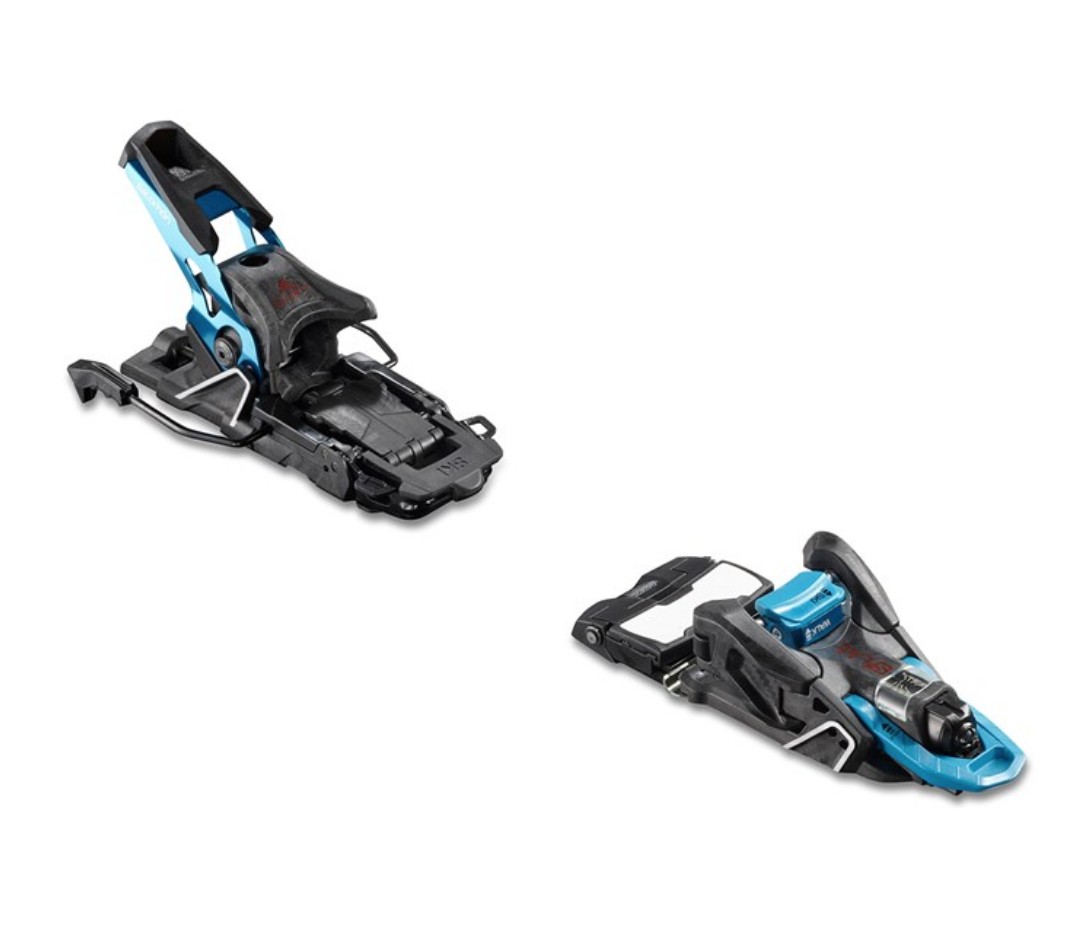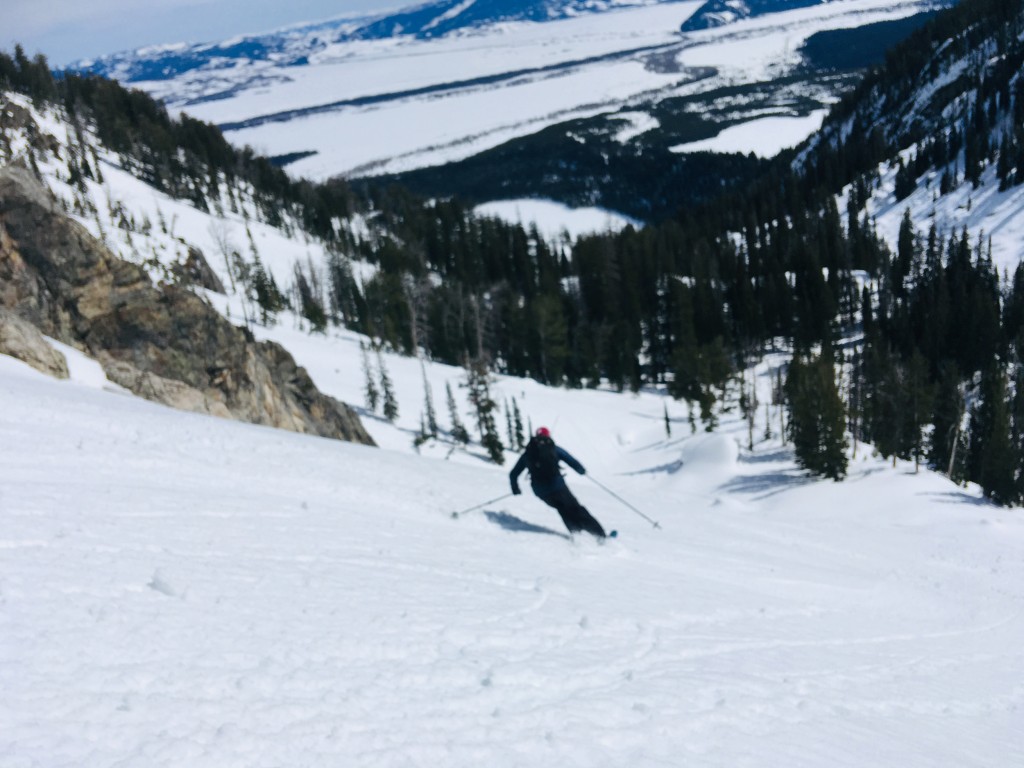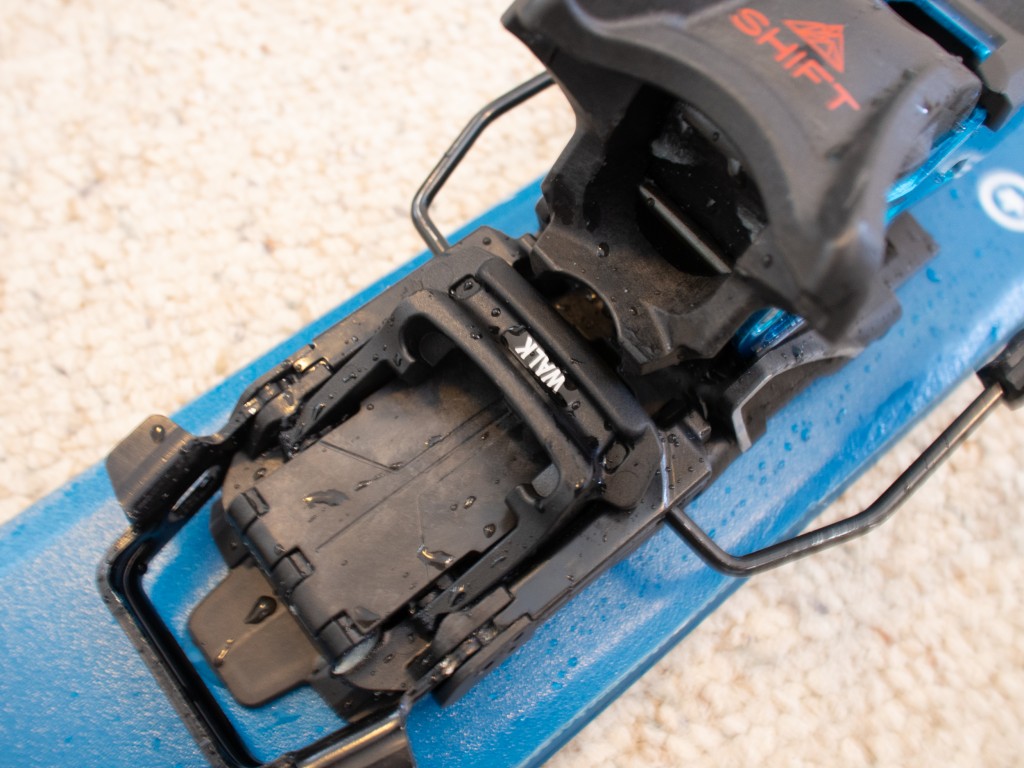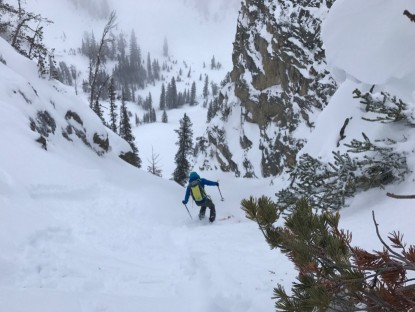Salomon S/Lab Shift MNC Review
Our Verdict
Compare to Similar Products
 This Product
Salomon S/Lab Shift MNC | |||||
|---|---|---|---|---|---|
| Awards | |||||
| Price | Check Price at REI Compare at 4 sellers | $700 List $662.99 at Amazon | $800 List $519.96 at Evo | $600 List | $346.49 at Amazon Compare at 2 sellers |
Overall Score  |
|||||
| Star Rating | |||||
| Bottom Line | A resort alpine ski binding that can be used for some human-powered uphill excursions | For the weight, these bindings cram in all the important features in innovative and usable fashion | If you truly need more performance features than this lightweight binding provides, you fall into a tiny sliver of skiers at the hard-charging end of the spectrum | Ultralight bindings with broadly adjustable release values | Through all the turmoil, its lineage remains reliable, simple, and affordable |
| Rating Categories | Salomon S/Lab Shift... | Black Diamond ATK R... | Atomic Backland Tour | Dynafit Superlite 150 | Dynafit Speed Turn |
| Weight (35%) | |||||
| Downhill Performance (25%) | |||||
| Touring Performance (20%) | |||||
| Ease of Use (15%) | |||||
| Durability (5%) | |||||
| Specs | Salomon S/Lab Shift... | Black Diamond ATK R... | Atomic Backland Tour | Dynafit Superlite 150 | Dynafit Speed Turn |
| Weight (pounds for pair) | 3.99 | 1.61 | 1.26 | 0.79 | 1.63 |
| Weight of one binding and screws. Lightest possible configuration w/o brakes (in grams) | 905 | 366 | 286 | 179 | 370 |
| Weight of 2 bindings Multiple options are noted where we have tested multiple options. (in grams) | 1810 | 732 | 572. 770 with brakes | 358. 492 with adjustment plate | 740 |
| Release value range | 6 to 13 | 5 to 12 | Men, "Women", "Expert" | 4 to 13 | 4 to 10 |
| Stack height: average of toe and heel pin height (in mm) | 44 | 37 | 37 | 36 | 38 |
| Toe/heel delta: difference in height between heel pins and toe pins (in mm) | 14 | 12 | 10 | 10 | 17 |
| Brakes? | Integrated | Yes | Optional | Optional | No |
| Brake width options | 90, 100, 110, 120 mm | 86, 91, 97, 102, 108, 120 mm | 80, 90, 100, 110, 120 mm | 75, 90, 105 mm | N/a |
| ISO/DIN Certified? | Yes | No | No | No | No |
| Ski Crampon compatible? | Yes. Shift compatible only. | Yes. "Standard" style. Not all crampons will be cross-compatible | Yes. "Standard" style. Not all crampons will be cross-compatible | Yes. "Standard" style. Not all crampons will be cross-compatible | Yes. "Standard" style. Not all crampons will be cross-compatible |
Our Analysis and Test Results
The Shift binding is truly revolutionary.
Basically, this is a resort alpine binding with just a couple of little tweaks that make it tour-worthy. For those that insist on owning a set of resort gear that can be skinned with, this is definitely your best choice. Setting aside our thoughts on this compromised strategy for a moment, and allowing that, no matter how much we might try and convince you otherwise, you will seek "quiver of one" resort/backcountry gear, this binding is pretty exciting. We really can't recommend using the same gear for human-powered backcountry skiing and for resort skiing. The two activities are really quite different, despite appearances to the contrary. What works well in one venue is a liability in the other.
Nonetheless, you will seek this sort of equipment. When you do, choose the Shift binding. You will suffer on the uphill portion of your backcountry days, but the remainder of the time, you will experience high performance. Realize that the Shift binding weighs more than four times as much as the bindings our test team chooses for day-to-day backcountry skiing use. Alright, soapbox dismounted.
Performance Comparison
Touring Performance
That the Shift binding tours at all is exciting enough. It is literally an alpine binding in form and function, and then it works with compatible boots to transform into an uphill machine. This is way cool, and something many have sought for a long time.
As compared, though, to dedicated touring bindings, the Shift is pretty mediocre in touring performance. The bulky construction and plethora of moving parts attract and collect more ice and snow than most. The toe piece range of motion is enough for basic touring but comes up short in certain situations. We don't like that there are only two touring heel-level options. In the stiff boots, you will likely pair with these bindings, having more heel level options is usually desirable.
Downhill Performance
The Shift binding skis downhill like a resort binding. In our testing (admittedly, conducted by a team far more accustomed to touring bindings than to alpine bindings), we could notice no difference between the Shift and typical resort bindings.
There are downhill performance differences between touring bindings. And there are downhill performance differences between resort bindings. However, these differences between bindings within a category are tiny compared to differences between the two categories. Touring bindings are way more similar to one another than they are to resort bindings. And vice-versa. Except for the Top Pick Salomon Shift.
The downhill performance of the Shift is far more similar to that of resort bindings than to its touring cousins. First, you get in and out, in downhill mode, just like you would with a resort binding. For most recreational skiers, this is the biggest difference and most valuable attribute. Next, the Shift has release characteristics that have been tested and certified to match those of resort bindings and (the slightly lower standard) of alpine touring binding certification. Further, as the only "tech style" touring binding that doesn't use tech-toe pins for downhill mode, the Shift has release elasticity unmatched in a touring binding. Still, further, the binding provides real and valuable down-and forward-pressure that lends a feeling of rigid and direct connection that touring bindings just can't match. Finally, and this is an indirect downhill performance benefit, you can use regular alpine boots, downhill only, in the Salomon Shift.
Ease of Use
Assuming that these bindings will be mainly used for resort skiing, their ease of use scores are pretty favorable. In resort mode, the Shift is no different than other alpine bindings. You step in, go, step out, and stop. Easy enough.
In the big picture, as alluded to above, the ability to use both touring boots (at least, those touring boots that meet the "ISO AT norm"; many popular models do not) and resort boots in the Salomon Shift (pending, of course, professional adjustment and testing. All boot/binding combinations, regardless of stated "compatibility" should be tested by a mounting professional to verify appropriate function) is a usability attribute. You can own and travel with one pair of skis and two pairs of boots to have -sort of- two sets of ski gear for the bulk of just one pair of skis.
For touring, though, the ease of use suffers. As compared to regular touring bindings (which, again, we recommend dedicated touring bindings for touring), the Shift requires more complicated transitions, has fiddlier adjustments and is harder to get in and out of. For instance, to step into touring mode, even once the binding has been transitioned to touring mode, you need to hold the pin "jaws" open and then step in. Most touring bindings are simpler to use in this regard. Changing from touring to ski mode requires disengaging the brake lock on the heel piece, but doing so with your hand exposes your hand to pretty violent spring-loaded action. Do so with your ski pole to reduce the potential for injury.
Weight
The Shift is, by far, the heaviest "touring" binding we have tested here. A pair of them is almost exactly four pounds, while the average of the rest of the bindings is less than half that. Remove the other "downhill oriented" bindings from the sample set, leaving only dedicated touring bindings; the average weight is almost 1/3rd that of the Shift. The lightest category of touring bindings is less than 1/4 the weight of the Shift.
For human-powered skiing, weight is king. Weight on your feet is truly onerous. Backed studies of human physiology indicate that a pound on your feet is like five pounds on your back, in terms of energy expenditure. Choosing the Shift over, for instance, one of our Editors' Choice options (each weighing around 1.25 pounds for a pair) is like putting about 14 extra pounds in your backpack. The Shift is heavy, and you will definitely notice it on the uphill. For weight reasons alone, we only recommend the Shift for those that only make occasional, short forays into human-powered backcountry.
Durability
We've had no issues, so far, with the integrity of the Shift. Nor have we heard of any patterns of issues. Touring bindings in general, and specifically entirely new designs are notorious for first-generation durability and construction shortcomings. That Salomon/Atomic have so far escaped this quality control, and customer service issue is notable.
Despite a lack of durability issues so far, we have our reservations. This is, after all, a new design of a product that, despite above assertions, is at least a little optimized for low weight. It is heavy for a touring binding, but it is light for all that it does. Lightweight gear gets that way by compromising a variety of things. Durability can be compromised. We aren't too worried about the heel piece of the Shift, as it is essentially the same as the heel pieces that Atomic/Salomon have made and sold for decades. The toe piece is entirely new and has major moving parts. We have our eye on it and will continue testing it.
Value
The cost of the Shift is in line with other high-end touring bindings, but it costs significantly more than most basic resort bindings. Given its niche applications, we can't call it a great value in every way. However, you are likely looking at it for value reasons. On the surface, it appears that, with the Shift, you can have one set up for resort and backcountry use. This is true but has caveats. We fully explore the pros and cons in the value equation of this Shift "quiver of one" strategy in our main AT binding review article.
Conclusion
Of course, there are many ways to look at the value math and the overall choice of how to set yourself up with backcountry equipment. Regardless, think this choice through. The Shift is awesome and tempting, and we love it for specific niches of users and types of use. But we don't recommend it as an inexpensive way to get into the backcountry. The performance costs of that strategy are too great for us to recommend. If you ski more than 25% of your time in the backcountry, consider just using your touring gear at the resort (and adjusting your safety and performance expectations accordingly). If you ski mostly at the resort, get the Shift. If you ski a ton in all venues, get multiple setups for maximum utility.














